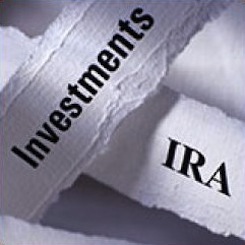How does an IRA retirement plan work? What are the benefits of having an IRA? Learn more about IRAs to see if it should be a part of your retirement savings.
So you’ve got a 401(k) through your workplace and are actively contributing. Good for you! But when saving for retirement, it’s a good idea to take advantage of additional retirement investment options as well. Another way to boost your retirement savings is to open an IRA, or Individual Retirement Account.
How does an IRA retirement plan work?
Unlike a 401(k) plan, which you may be able to open through your employer, an IRA is a retirement plan that you open on your own through any large financial institution. Typically, IRA providers offer a broad range of investment options—including mutual funds, stocks and bonds—so you can diversify your retirement portfolio to best suit your needs.
Like a 401(k) plan, dollars can be invested either through a Traditional or Roth plan. The biggest difference between the two has to do with when your investments are taxed. With a Traditional IRA, you pay taxes when you withdraw your funds in retirement. (However, in some cases, your contributions might be tax free.) The Roth IRA is the opposite—contributions are made with after-tax dollars but withdrawals made in retirement are tax-free. For both plans, you can begin making qualified distributions at age 59½. (With a Roth you must also have had the account for five years.)
Following are a few highlights of the Traditional and Roth IRAs.
Traditional IRA retirement plan
One of the big benefits of a Traditional IRA is that your retirement savings are tax-deferred. This means that all your dividends, interest payments, and capital gains compound each year without being taxed. Anyone under the age of 70½ can make contributions, as long as you have earned income. And depending on your income, and whether you have access to a work-related retirement plan, you may be able to take a tax deduction on your contributions.
Traditional IRA retirement plans have a few restrictions to take into consideration as well. Yearly contribution limits are capped at $5,000. (Those age 50 and above can contribute an extra $1,000 in “catch-up” contributions.) And once you hit the age of 70½ you can no longer make contributions and must start withdrawing from your account. In addition, if you withdraw any funds under the age of 59½, you will face a 10 percent penalty on you withdrawal—in add to the regular income tax you’ll owe.
Roth IRA retirement plan
Like the Traditional IRA, with a Roth IRA your retirement savings are tax-deferred and you must have earned income to participate. Unlike a Traditional IRA, a Roth IRA provides you with more freedom in accessing your funds.
With a Roth IRA, you do not need to withdraw your retirement savings by a certain age. You can also keep contributing to your account regardless of your age. And you can withdraw contributions penalty-free whenever you want for whatever you want. (However, if you withdraw any earnings you have made on your investments before age 59½, you’ll face a 10 percent penalty.) In addition, as long as your Roth IRA has been open for five years, the IRS lets you withdraw up to $10,000 (including earnings) tax- and penalty-free for certain qualified distributions.
Roth IRAs have their restrictions as well, however. Your contribution limits are also capped at $5,000 each year (with those age 50 and above able to contribute an extra $1,000) and there are income limits for contributing. For 2010, your modified adjusted gross income must be $167,000 or less if married filing jointly and $105,000 or less if single. (To determine your modified adjusted gross income, use worksheet 1-1 on page 16 of IRS Publication 590.)
Which IRA retirement plan is right for me?
You’ll need to weigh the advantages with the restrictions of both the Traditional and Roth IRA retirement investment options to determine which best fits with your overall retirement savings plan. But, in general, it’s a good idea to open an IRA and invest as much as the government allows since it is a tax-favored account.
Have you started your retirement planning yet? Start the retirement process now and learn more about how much you need to save for retirement, how to increase your retirement savings, and other retirement investment options.
This article contains general information. Individual financial situations are unique; please, consult your financial advisor or tax attorney before utilizing any of the information contained in this article.
Related Articles
- How To Choose A Financial Advisor
- What Is The Alternate Minimum Tax (AMT)?
- Tips To Choose The Right Accountant
- Tips To Manage Your Money When Your Married
- 7 Steps to Manage Your Money When You Have Kids
- Six Steps To Create And Manage A Budget
- Retirement Planning: Start the Process!
- Retirement Planning: How much do I need to save?
- Retirement Planning: Tips for Saving
- Retirement Planning: Investment Options
- Year End Tax Tips To Save You Money!
- 2010 Year End Tax Tips!
- Catch Up On Your Retirement Savings
- Should You Invest In An ETF
- Should An Annuity Be Part Of Your Retirement
- What is a 401K?
- What Is a Roth IRA and is it right for you?
- Investing for beginners: The basics of how to invest your money
- Estate Planning: Why You Need A Will
- Estate Planning: Should You Create A Trust?
- Estate planning: Tax Planning For Your Estate
 Print
Print Email
Email










